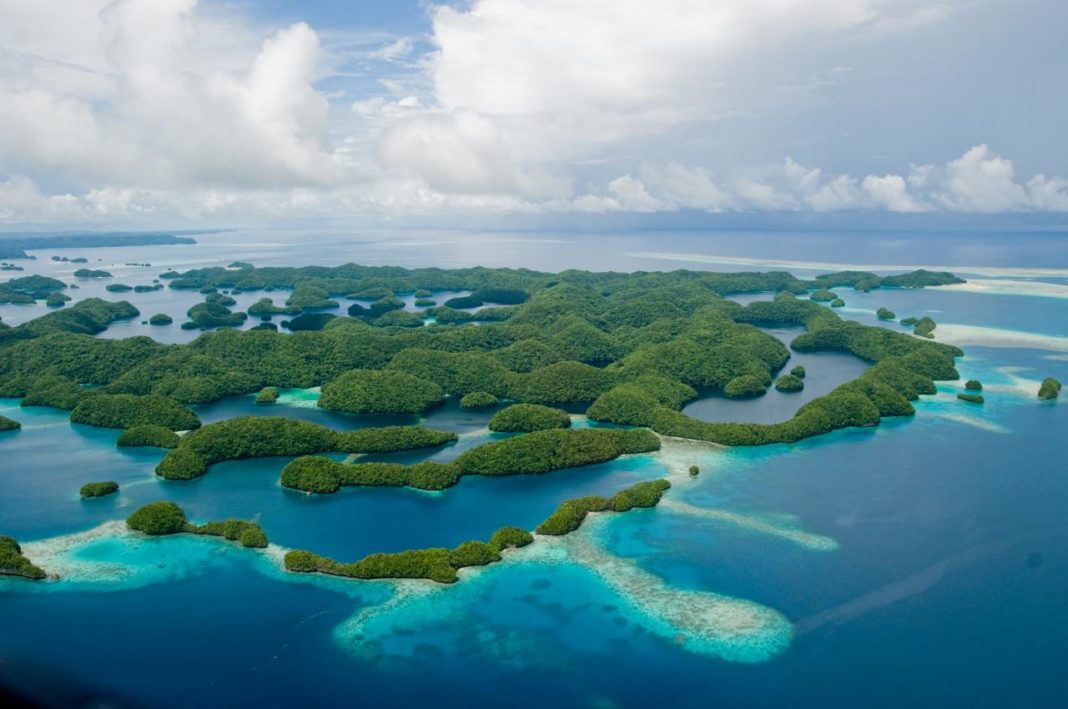The Rock Islands of Palau, also called Chelbacheb, are a collection of several hundred small limestones or coral uprises in the Southern Lagoon of Palau between Koror and Peleliu, now an incorporated part of Koror State.
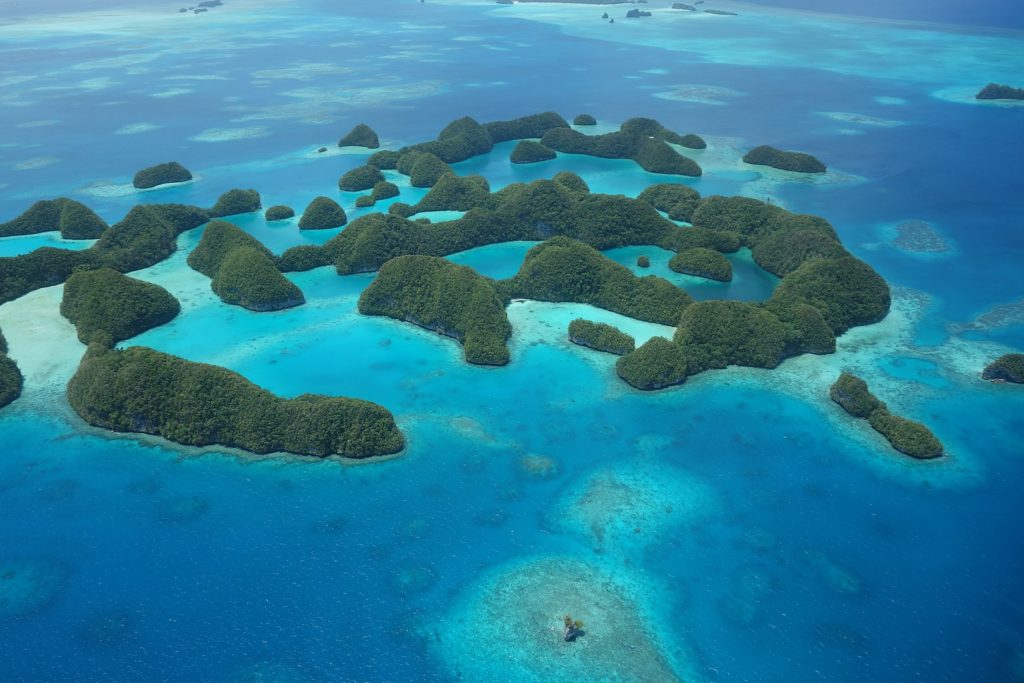
There are between 250 and 300 islands in the group according to different sources, with an aggregate area of 42 square kilometers and a maximum height of 207 meters. The islands were declared a UNESCO World Heritage Site in 2012.
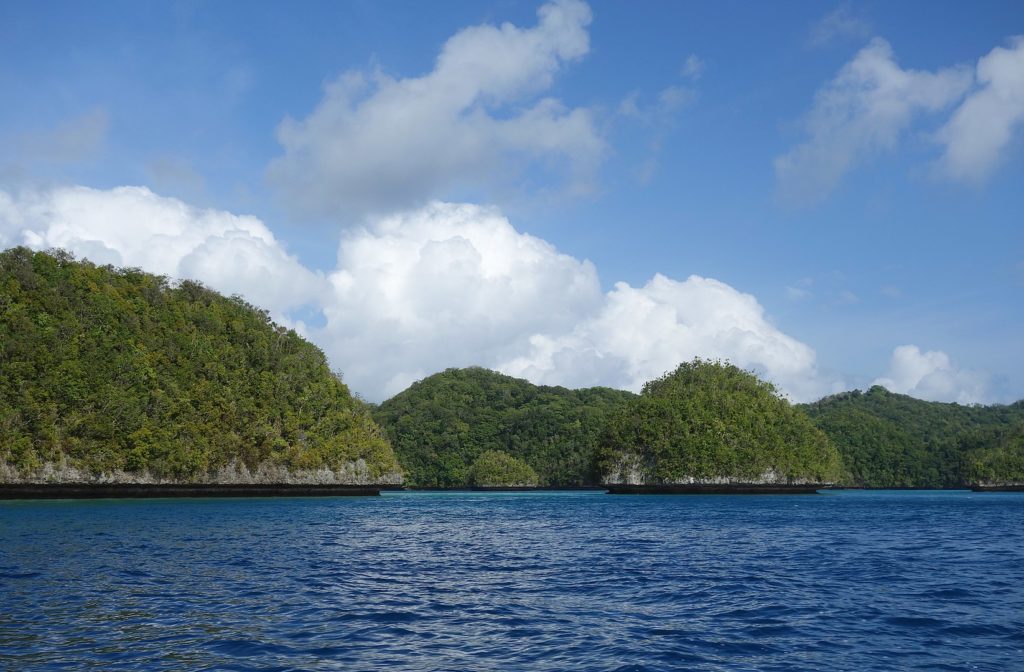
The Rock Islands are sparsely populated and famous for their beaches, blue lagoons, and the peculiar umbrella-like shapes of many of the islands themselves. Many of the islands display a mushroom-like shape with a narrower base at the intertidal notch. There are 52 marine lakes on these islands, one of which is the world-famous Jellyfish Lake. Beautiful beaches, azure lagoons, and the distinctive umbrella-like formations of many of the islands are all features of the Rock Islands.
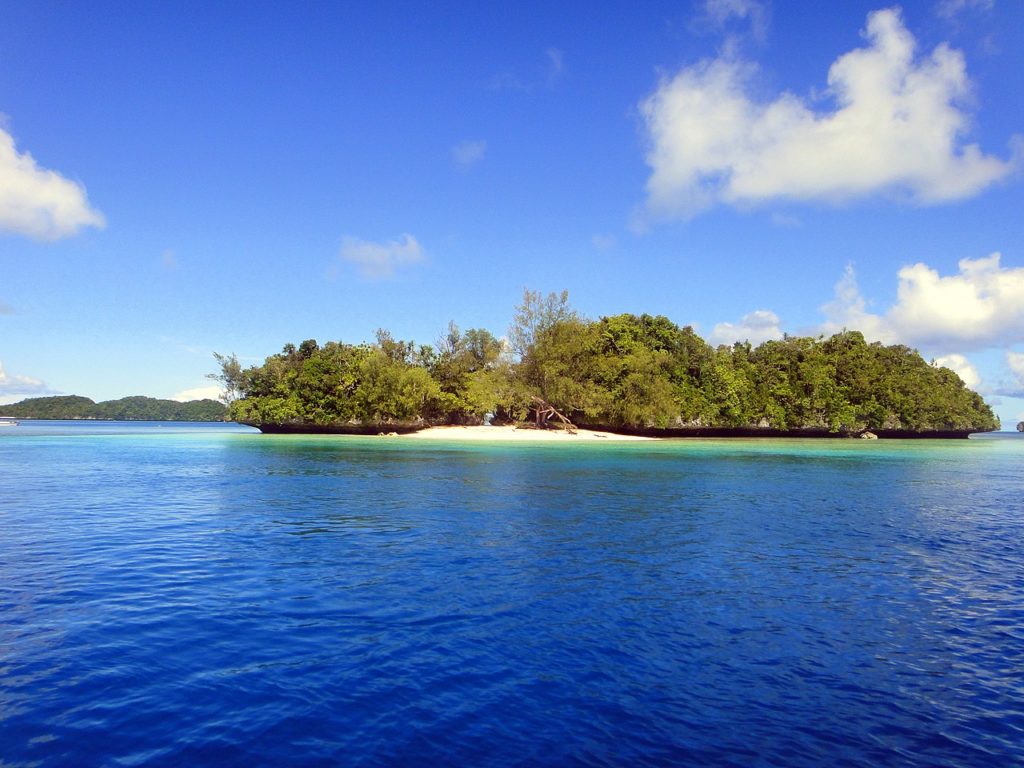
The indentation comes from erosion and from the dense community of sponges, bivalves, chitons, snails, urchins, and others that graze mostly on algae. Also, the islands have been shaped over time by weather wind, and vegetation.
The islands contain a significant set of cultural remains relating to occupation over some five thousand years that ended in abandonment. Archaeological remains and rock art sites are found in two island clusters – Ulong and Negmelis, and on three islands – Ngeruktabel, Ngeanges, and Chomedokl.
Remains of former human occupation in caves, including rock art and burials, testify to seasonal human occupation and use of the marine ecosystem, dating back to 3,100 BP and extending over some 2,500 years.
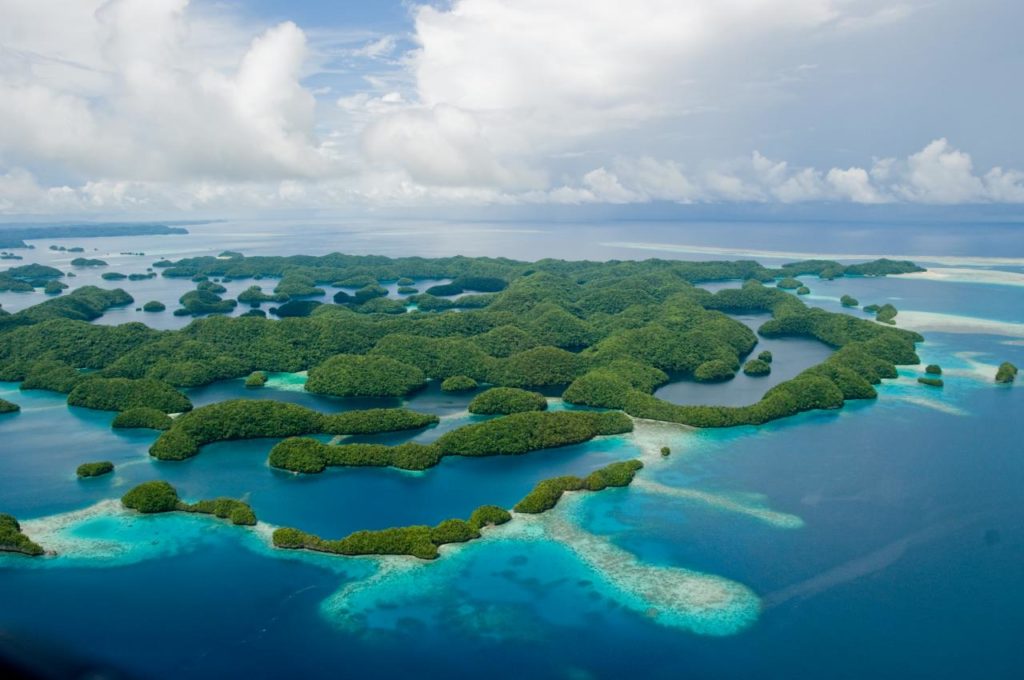
The islands and surrounding reefs include Palau’s most popular tourist sites, such as the Blue Corner, Blue Holes, German Channel, Ngermeaus Island, and the famed Jellyfish Lake, one of many marine lakes in the Rock Islands that provides home and safety for several kinds of stingless jellyfish found only in Palau. It is the most popular diving destination in Palau, offering some of the most diverse dive sites on the planet, from wall diving and high current drift dives to manta rays and shark feed, to shallow lagoons, decorated caves, and overhangs. Tourist attractions also include Dolphin Bay, where a staff of veterinarians and trainers educate guests about dolphins.
According to the Internet





